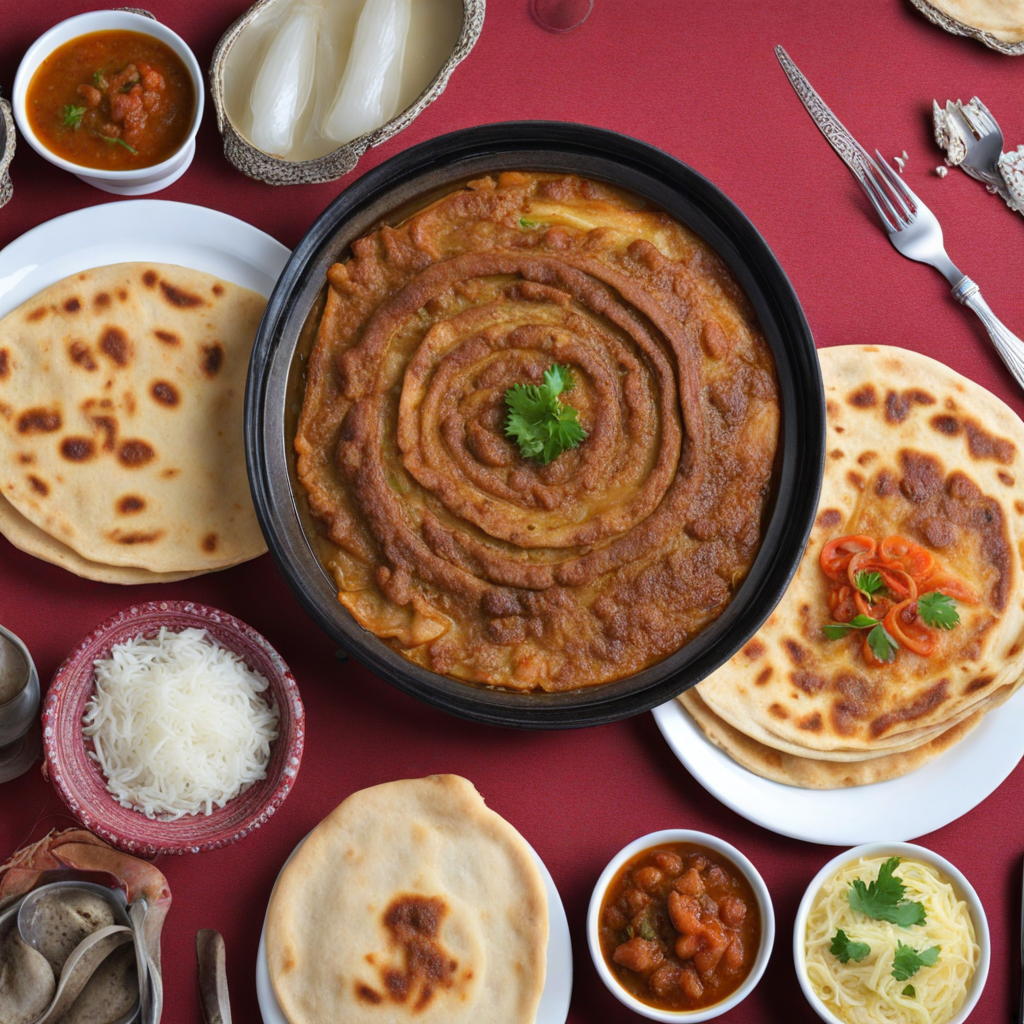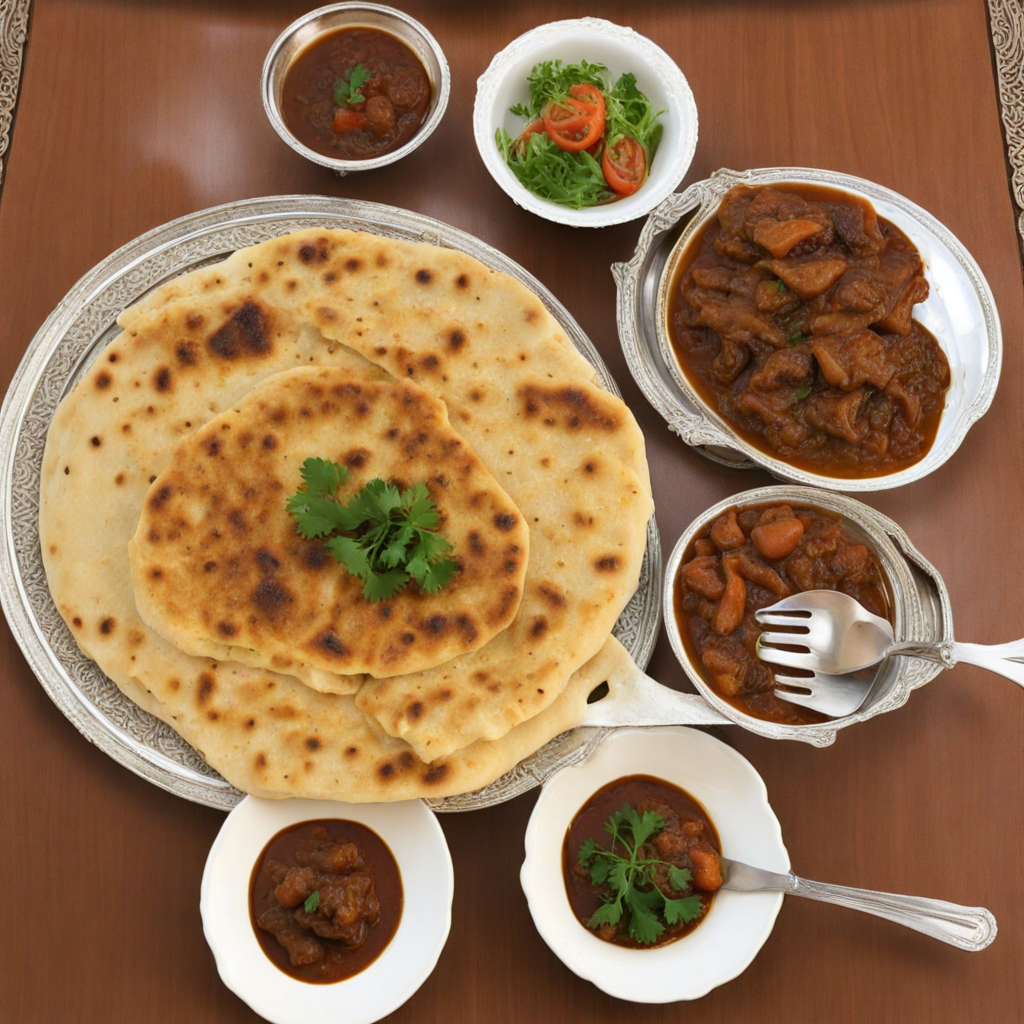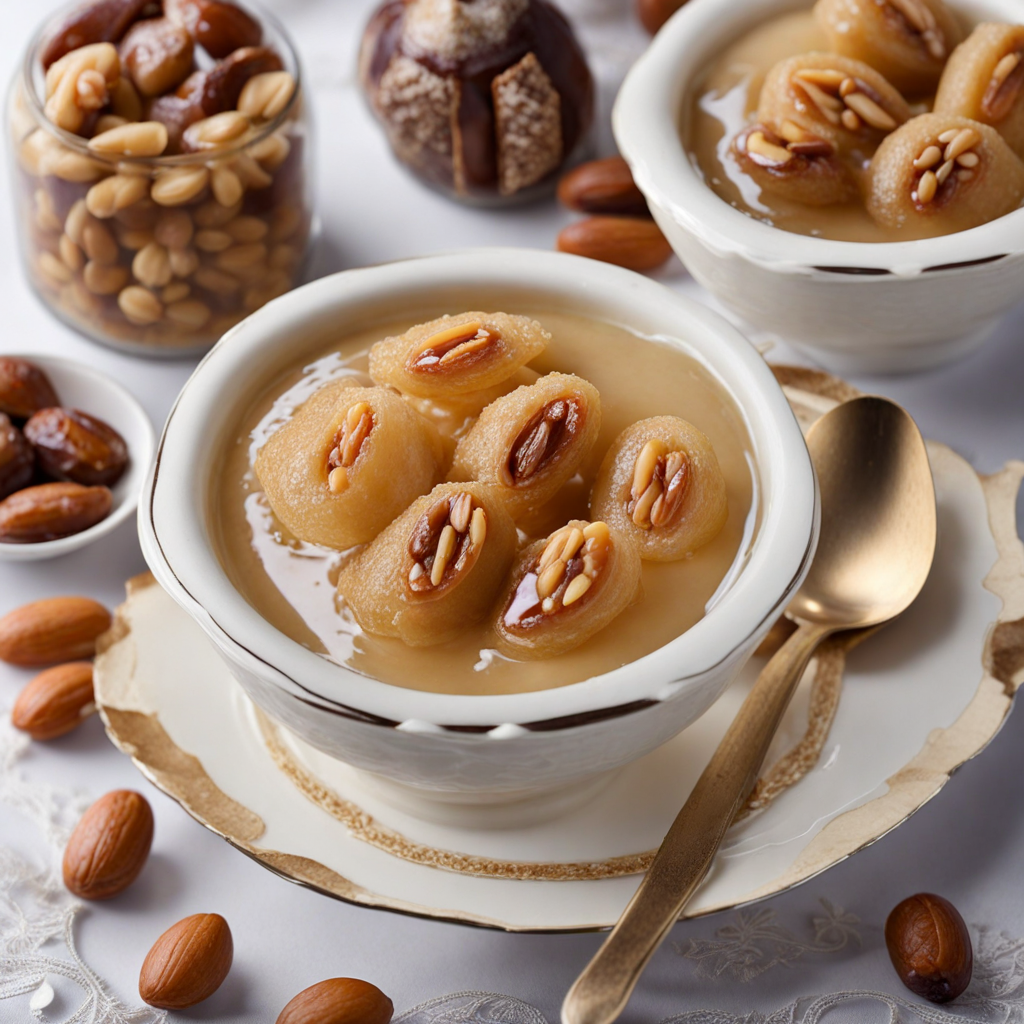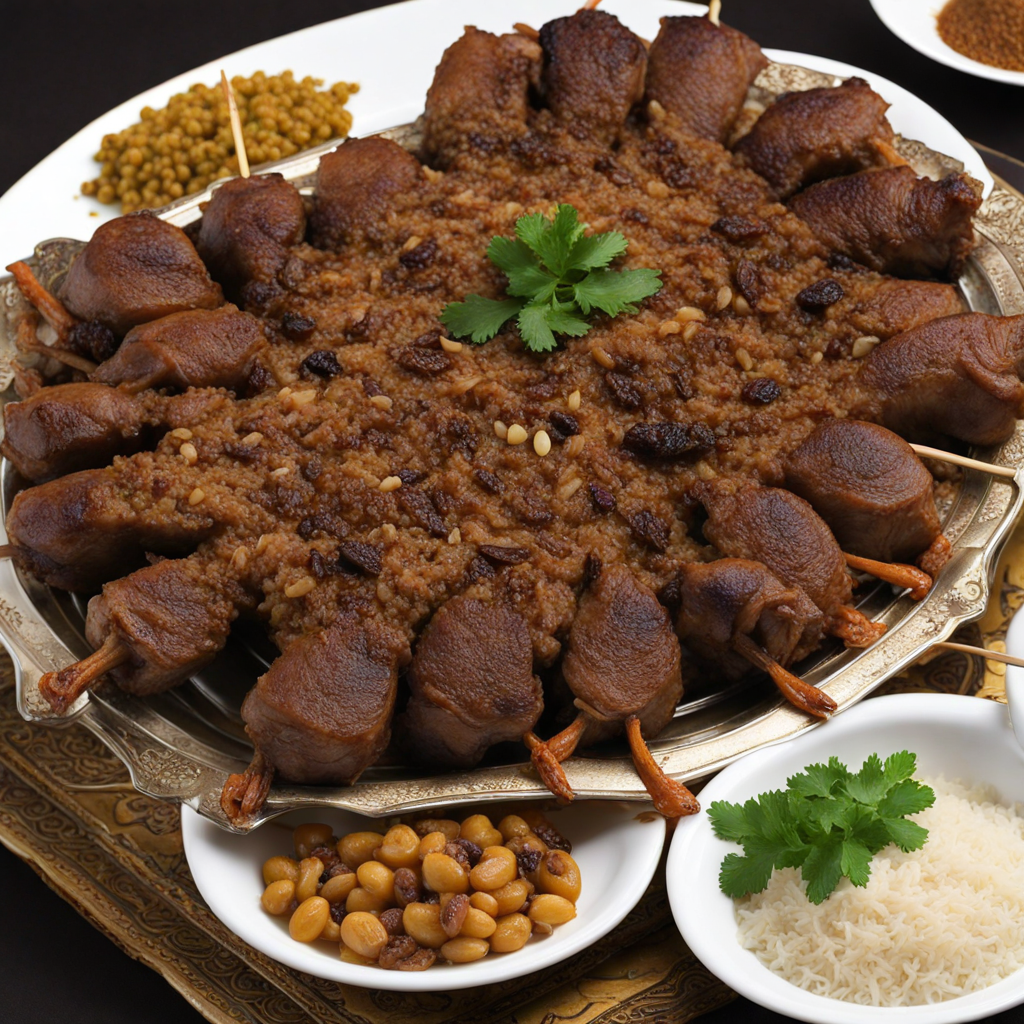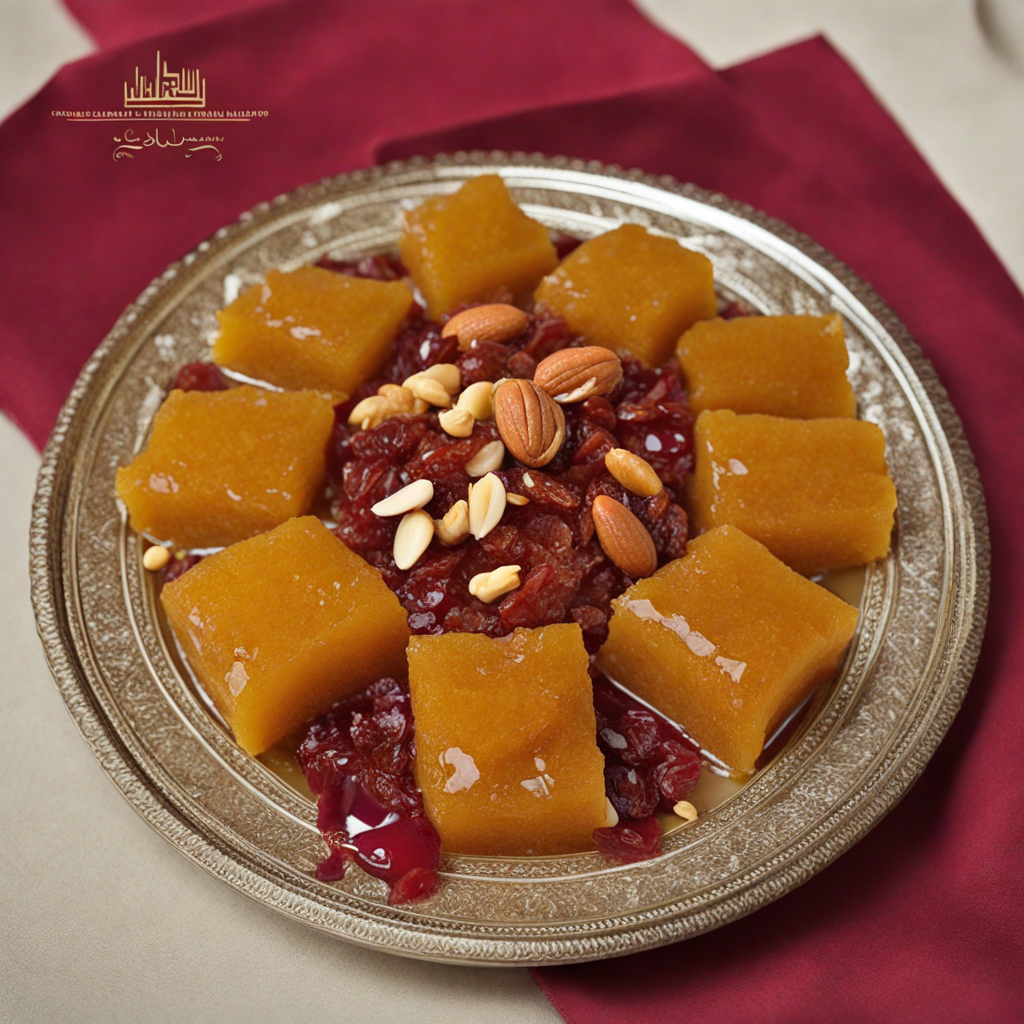Thareed
Thareed, a traditional dish from Bahrain, is a delightful culinary experience that combines rich flavors and textures. At its core, Thareed features tender pieces of meat, typically chicken or lamb, stewed to perfection with an array of aromatic spices. The dish is often enriched with tomatoes, potatoes, and carrots, creating a hearty and comforting stew that warms the soul. The slow-cooked meat absorbs the essence of the spices, resulting in a tender, flavorful bite that melts in your mouth. One of the most distinctive elements of Thareed is its use of bread, which serves as both a base and a key component of the dish. Traditionally, flatbread, known as 'khubz,' is layered at the bottom of the serving dish, soaking up the savory broth from the meat and vegetables. This not only adds a delightful texture but also enhances the overall flavor as the bread absorbs the spices and juices from the stew. Each bite is a harmonious blend of soft bread and rich, flavorful stew, making it a satisfying meal. To elevate the experience further, Thareed is often garnished with fresh herbs such as coriander and mint, which bring a refreshing contrast to the deep, savory flavors of the dish. The combination of warm spices, tender meat, and aromatic herbs creates a unique taste profile that reflects the rich culinary heritage of Bahrain. Whether enjoyed during a family gathering or as a comforting meal at home, Thareed is a delicious way to explore the flavors of Bahraini cuisine.
How It Became This Dish
Threed: A Culinary Heritage from Bahrain Threed, a traditional dish rooted deep in the culinary heritage of Bahrain, is more than just food; it is a symbol of hospitality, cultural identity, and historical evolution. This dish, which consists of layered bread soaked in a rich meat and vegetable stew, has been cherished across generations, and its story reflects the broader narrative of Bahrain's history and culture. Origins of Threed The origins of Threed can be traced back to the Arabian Peninsula, where the practice of stewing meats with vegetables has been a common culinary technique for centuries. The word "Threed" itself comes from the Arabic verb "tharada," which means to crumble or break into pieces. This etymology highlights the dish's core characteristic: the bread, typically made from wheat flour, is torn into pieces and combined with a savory stew, allowing the bread to absorb the flavors of the meat and spices. Bahrain, with its strategic location along ancient trade routes, has been a melting pot of cultures and culinary influences. The island's history of trade with Mesopotamia, Persia, and the Indian subcontinent introduced various spices and ingredients that enriched local cuisine. Threed reflects this convergence of flavors, incorporating spices such as cumin, coriander, and saffron, which were historically accessible due to Bahrain’s thriving trade networks. Cultural Significance In Bahraini culture, Threed is more than just a dish; it is an embodiment of community and togetherness. Traditionally prepared during special occasions, family gatherings, and festive celebrations, Threed serves as a centerpiece that fosters a sense of unity among diners. The act of sharing this dish, often served in a large communal platter, emphasizes the importance of togetherness and hospitality in Bahraini society. During Ramadan, the holy month of fasting, Threed holds a special place at iftar, the meal that breaks the fast at sunset. Its hearty nature provides nourishment after a day of fasting, and its communal aspect encourages families and friends to gather and share in the celebration. The dish’s rich flavors and satisfying texture evoke warmth and comfort, making it a beloved choice for many during this sacred time. Development Over Time As Bahrain’s society evolved through the ages—marked by political changes, economic shifts, and globalization—so too did the preparation and presentation of Threed. Historically, the dish was prepared with whatever ingredients were available, reflecting the resourcefulness of Bahraini cooks. Traditional recipes often included lamb or chicken, combined with seasonal vegetables, such as potatoes, carrots, and eggplant. With the advent of modernity and changes in lifestyle, the preparation of Threed has also adapted. While many families continue to prepare the dish using traditional methods, some have embraced convenience, utilizing pre-packaged ingredients or adaptations that reflect contemporary tastes. This evolution is evident in the fusion of Threed with other culinary traditions, introducing variations that incorporate different proteins or spices from global cuisines. Despite these changes, the essence of Threed remains intact. Many Bahraini households still preserve the traditional method of preparing the dish, passing down recipes through generations. This continuity reflects the importance of culinary heritage in maintaining cultural identity. Ingredients and Preparation The preparation of Threed typically begins with the creation of the stew, which forms the heart of the dish. The meat, usually lamb or chicken, is cooked with an array of spices, onions, and tomatoes until tender. The addition of vegetables enhances the stew's flavor and nutritional value. The key to a successful Threed lies in the balance of spices, which not only enhance the taste but also pay homage to the region's rich spice trade history. While the stew simmers, the bread is prepared. Traditionally, this is a type of flatbread, akin to khubz, which is either made from scratch or purchased from local bakers. The bread is torn into pieces, allowing it to soak up the flavorful stew when combined. Once the stew is ready, it is poured over the torn bread, allowing the flavors to meld before serving. Threed in Modern Bahrain In contemporary Bahrain, Threed continues to be cherished as a staple dish, reflecting the nation’s culinary identity. Restaurants, especially those that specialize in traditional Bahraini cuisine, frequently feature Threed on their menus. While some establishments may offer modern interpretations of the dish, the traditional version remains popular among locals and visitors alike. Food festivals and cultural events often showcase Threed, celebrating its historical roots and significance in Bahraini culture. These occasions provide an opportunity for younger generations to engage with their culinary heritage, ensuring that the knowledge and love for Threed are passed down. Additionally, the rise of social media and food blogs has contributed to a renewed interest in traditional Bahraini dishes, including Threed. Home cooks and chefs alike share their unique takes on the dish, often accompanied by stories that highlight its significance in their families. This digital sharing fosters a sense of community and pride in Bahraini cuisine, encouraging a new appreciation for its rich culinary history. Conclusion Threed is more than a mere dish; it is a culinary testament to the history, culture, and values of Bahrain. Its origins reflect the island's historical trade routes and the blending of diverse culinary traditions, while its preparation and communal aspect underscore the importance of family and hospitality in Bahraini society. As the dish continues to evolve, adapting to modern tastes while retaining its traditional roots, Threed remains a beloved symbol of Bahrain's rich cultural heritage, inviting both locals and visitors to partake in its flavorful legacy.
You may like
Discover local flavors from Bahrain


